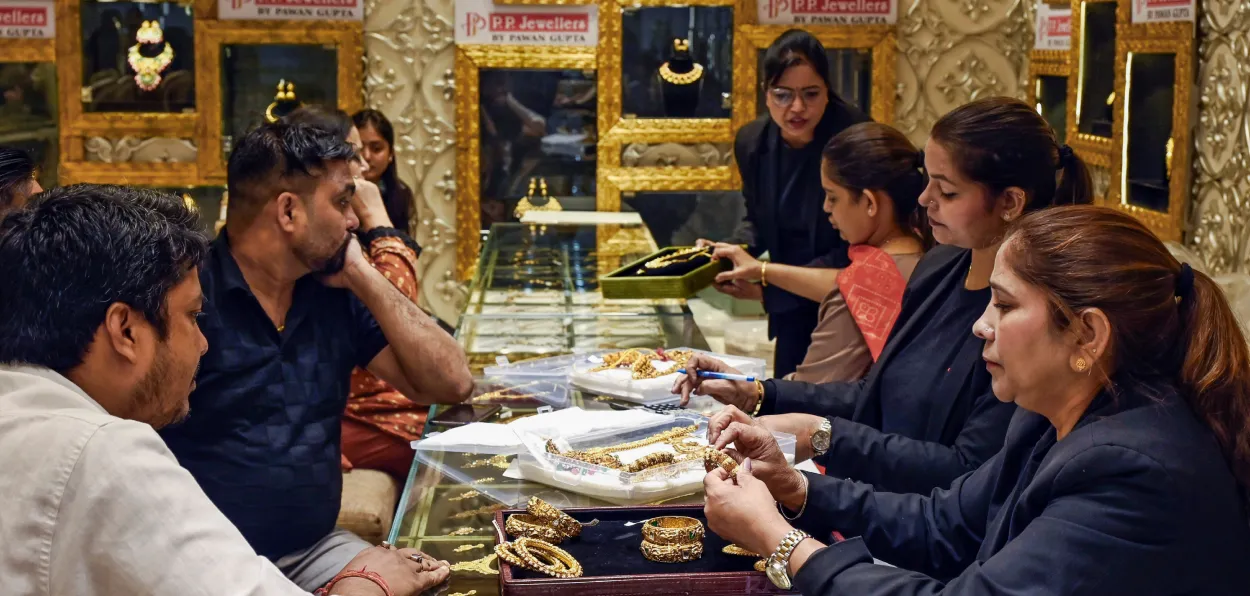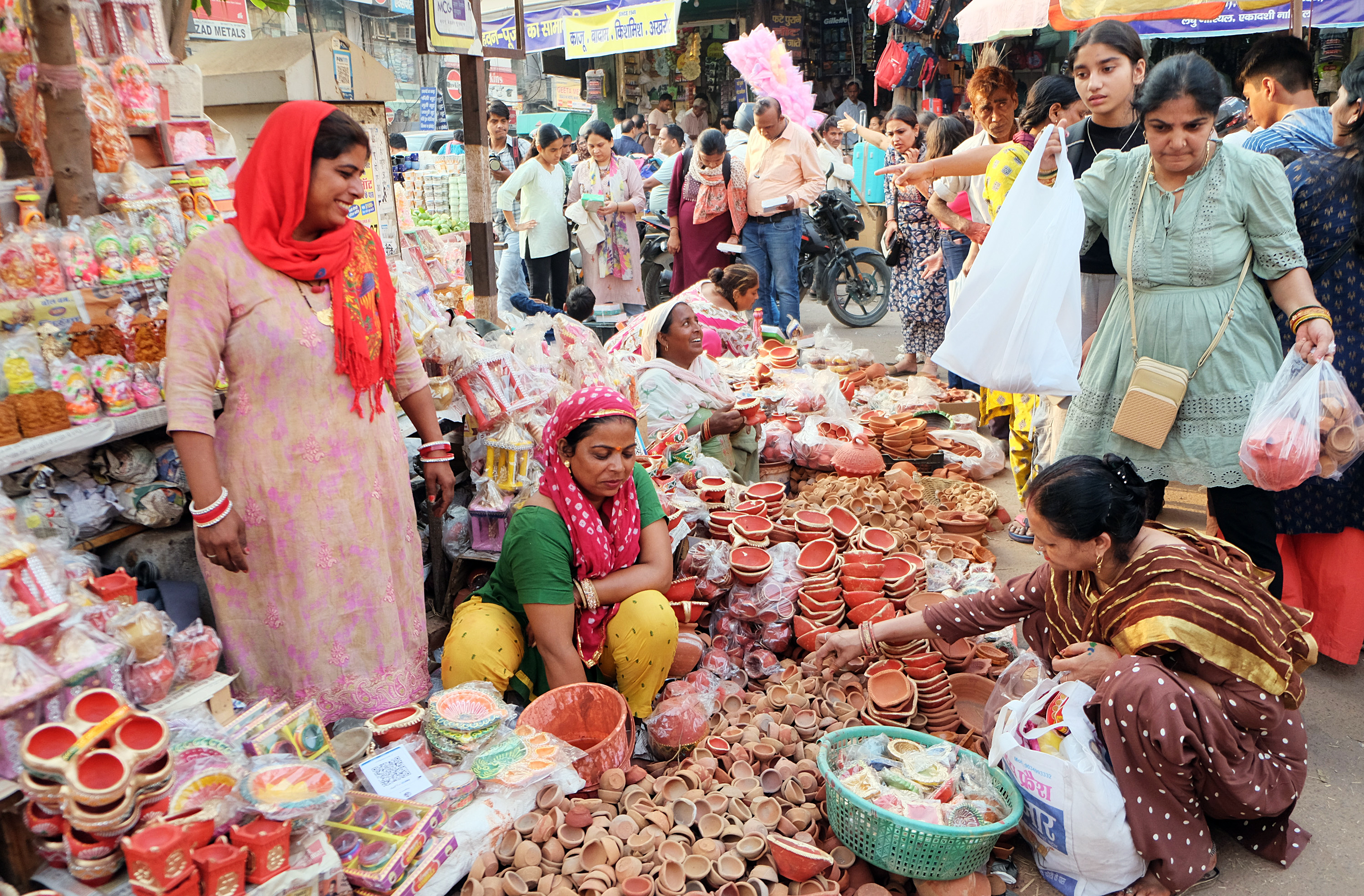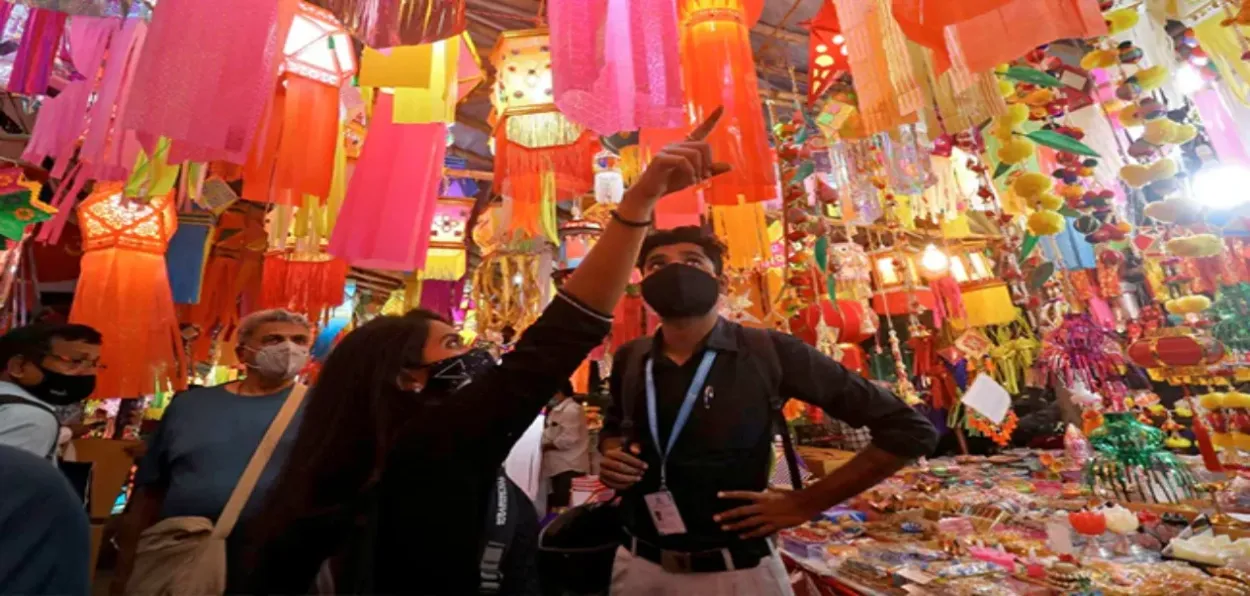
 Rajeev Narayan
Rajeev Narayan
Come October and November, India undergoes a dramatic transformation. Streets blaze with lights, homes gleam with fresh paint, markets overflow with boisterous buyers, and the economy hums with new energy. Diwali, the festival of lights, is more than just a cultural anchor; it is a significant economic catalyst. Each year, the weeks leading up to Diwali generate a quarter of the nation’s annual retail sales, making this a crucial driver of growth for companies, large and small, as well as the national Gross Domestic Product (GDP).
The numbers are no different in 2025. Festive spending is at the verge of scaling Rs 3.5 lakh crore, 20 per cent above last year. Household consumption, accounting for 60 per cent of the GDP, is getting its most decisive push of the year, making even hard-nosed analysts take note. “Diwali is the pulse point of the Indian economy,” the Confederation of Indian Industry (CII) said. “As people spend more, retailers expand, MSMEs gain traction and funding flows get a confidence boost. It’s a celebration with massive economic consequences,” it added.
The year 2025 is particularly special, with India navigating a volatile global environment. That makes the ongoing surge deeper than mere sentiment—it is an apt demonstration of internal economic resilience, the power of a billion-and-a-half consumers moving in unison.
 Diya sellers doing brisk business
Diya sellers doing brisk business
Among the most telling indicators of this Diwali surge is that gold and silver, metals that have always symbolised wealth, security and optimism, are seeing values soar. Silver prices have already climbed to Rs 2 lakh per kilogram, yet jewellers and traders are seeing record demand. Gold too has seen volumes rocket ahead of Dhanteras, sales rising between 15-25 per cent compared to last year.
This isn’t just humble tradition. Gold and silver purchases are strategic investment choices for Indian households, tangible assets that convey sentiment and security. The Indian diaspora has added to the momentum, with global jewellery orders rising steadily in recent weeks. The bullion ecosystem is also a major beneficiary. Hallmarking centres, logistics companies, craftsmen, retail staff and banks are all witnessing their busiest quarter, with the Diwali festive impulse moving capital through layered and diverse economic arteries.
“Diwali is a force multiplier,” the World Gold Council says. “Even with high prices, India’s cultural and investment relationship with gold remains strong, underscoring its role as both a traditional asset and a modern investment instrument.”
Auto, White Goods Surge Too
If gold is a symbol of prosperity, automobiles are its loudest engine. Passenger vehicle sales crossed 400,000 units in September, with projections pointing to record highs through the festive window. Two-wheeler sales, a crucial economic indicator in semi-urban and rural India, have been rising sharply as harvest incomes and festive sentiment converge.
This has been reinforced by policy moves and the resultant jump in consumer confidence. Lower GST rates on auto components and white goods have eased purchasing costs, while banks and non-banking financial companies (NBFCs) are offering easy loans. Automakers are also helping with new launches, discounts and bundled offers to capture runaway demand.

Discount offers by Car sellers
A striking trend is the surge in electric vehicle (EV) sales, which are up by 40 per cent. “The festive season is proving to be a turning point for EVs,” the Society of Indian Automobile Manufacturers (SIAM) said. “What was a niche is becoming mainstream.” For the auto sector, Diwali isn’t just a good month; it is a strategic pivot in the annual cycle. For consumers, it remains a time when economic aspiration and cultural belief align perfectly.
Lights, Homes and Digital Carts
While gold, silver and autos make news, the Diwali economy is also built on transactions that are smaller, but those that get together to create a demand tidal wave. India’s sweets and confectionery sector alone earns more than 30 per cent of its annual turnover during these festive weeks. Apparel sales have risen 25 per cent year-on-year, with both organised retail chains and small boutiques recording brisk business.
A parallel boom is also seen in home renovation and decoration work. Families across cities and towns are repainting walls, refurbishing kitchens, buying new furniture, installing decorative lighting and embracing new design trends. LED and solar-powered lights, once a curiosity, have become common, reflecting rising incomes and greater environmental awareness.
The digital economy is also adding a modern dimension to old rhythms. Online festive sales are projected to cross Rs 90,000 crore this year, with smartphones, electronics, apparel and home goods dominating consumer preferences. E-commerce is changing Diwali too—it is no longer a neighbourhood festival, but a national marketplace without boundaries. “The festive season has become India’s Super Bowl of consumption,” a spokesperson for Deloitte said. “Nowadays, brands plan their entire year around these few weeks. What happens during Diwali can shape quarterly and even annual performance.”

A Delhi Market on Diwali eve
Boost to Economic Confidence
What sets the Diwali economy apart is not scale, but spirit. This is a festival of confidence for individuals, families, businesses and institutions. It reflects faith not only in tradition, but in the nation’s economic trajectory. This is a purchasing story in sharp contrast to the cautious tone prevailing even in advanced economies. Diwali’s impact runs deep, from organised retail and MSMEs to roadside vendors and craft clusters. Artisans, diya potters, sweets-makers, jewellery craftsmen and delivery boys are all being swept up in the charge.
The informal economy, sometimes invisible in formal statistics, receives a vital injection of demand as well. One lamp, one sweet box, one fabric piece at a time, the festival touches lives and incomes across the spectrum. “This is the strength of India’s consumption base,” Morgan Stanley said in a report. “It is wide, deep and culturally reinforced, capable of driving momentum even when external headwinds are strong.”
After the Festival of Lights
When the fireworks fade and the lamps are extinguished, the energy unleashed by Diwali does not vanish. Policy measures, from GST rationalisation to digital payments promotion and MSME credit facilitation, have deepened the base of this seasonal boom. The festival has evolved from a temporary upswing into a dependable macroeconomic event, one that shapes inventories, pricing strategies and credit flows.
ALSO READ: Diwali lights have a universal appeal, and symbolism
Consumer behaviour is shifting too. India is using digital payments more openly, making ‘green’ choices and seeking value without abandoning tradition. The modern Diwali basket reflects a maturing mindset, one that embraces growth while holding on to its roots. In the act of buying, gifting, decorating and celebrating, Indians are expressing something profound—confidence in their own future. And that, economists and traders will tell you, is the true Diwali Dividend.
The writer is a veteran journalist and communications specialist
